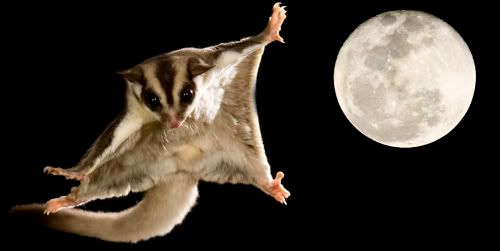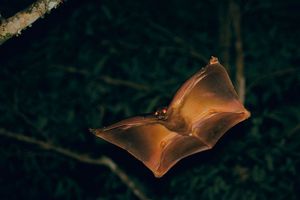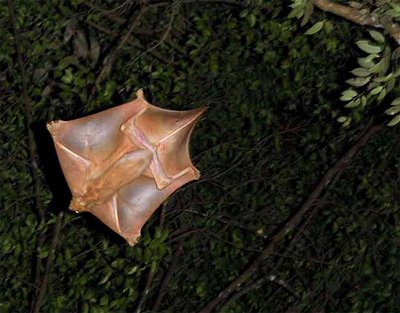Petaurus breviceps, more commonly referred to as the “Sugar Glider,” is a small marsupial found in Australia. On average Sugar Glides have the ability to glide approximately 50-150 meters. Sugar gliders have a squirrel-like body ending in a long tail. The heady is rather short and narrow. The hind feet are “syndactylus”, with two of the toes being partially fused together. They use their long tails for a control while they glide.
“Sugar gliders are named for a reason – they have a sweet tooth.” Their main source of sugar comes by tearing into its bark they can get at the sweet honey-like sap. They use their ability to glide to move from tree to tree, but sugar is not the only part of a Sugar Gliders diet. They are nocturnal animals that prey on larva and small insects, but Sugar Gliders also have many predators such as owls, foxes, cats and dogs. Therefore, we can conclude that the ability to glide is used both for predatory purpose and as a defense mechanism.
To glide effectively, a Sugar Glider will generate power by thrusting its hind legs off a tall tree and spread its limbs to reveal the patagium or membrane connected to each of the limbs. This allows it to generate enough lift force to keep it going. The thing I found most interesting was about the way Sugar Gliders land. When about 3 meters away from its target, the Sugar Glider brings its hind legs up close to the body and swoops upwards to make contact with all four limbs.
It is remarkable that an animal that has only a 12-15 cm body and a tail of equal proportion can glide through the air at such a great distance. If you want one as a pet, it is legal to have a Sugar Glider in all but four states: California, Hawaii, Alaska, and Massachusetts.
REFERENCES:
“Sugar Glider – Petaurus Breviceps.” Angelfire: Welcome to Angelfire. Web. 22 Sept. 2011. .
Extract, Bean. “Sugar Glider.” Science Daily: News & Articles in Science, Health, Environment & Technology. Web. 22 Sept. 2011. .
“Domestic Photo Tours and Workshops Catering to Digital Nature Photographers.” Web. 22 Sept. 2011. .
“Video — Sugar Gliders — National Geographic.” Video — Animals, Travel, Kids — National Geographic. Web. 22 Sept. 2011. .


